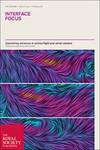What it means to be alive: a synthetic cell perspective
IF 4
3区 生物学
Q1 BIOLOGY
引用次数: 0
Abstract
Advances in bottom-up synthetic biology offer the exciting—albeit contentious—prospect of transitioning bio-science researchers from passive observers of life to potential creators of it. Synthetic cells closely emulate the attributes of their biological counterparts. These rationally designed microsystems exhibit emergent properties and life-like functionalities. They can therefore be used as simplified cell models to decipher the rules of life, and as programmable biologically powered micromachines for application in healthcare and biotechnology more broadly. While there is a consensus that current synthetic cells are not yet ‘living’, the question of what defines ‘aliveness’ is gaining increasing relevance. Exploring this concept necessitates a multidisciplinary approach, where scientists from across domains in the physical, life, engineering and social sciences participate in community-level discussions, together with the acceptance of a set of criteria which defines a living system. Achieving a widely accepted definition of ‘living’ represents a possible mission-oriented endpoint to the synthetic cell endeavour, uniting the community towards a common goal. As the field evolves, researchers must address regulatory, ethical, societal and public perception implications, while fostering collaborative efforts to harness the transformative potential of synthetic cells.活着意味着什么:合成细胞视角
自下而上合成生物学的进步为生物科学研究人员从被动的生命观察者转变为潜在的生命创造者提供了令人兴奋的前景——尽管存在争议。合成细胞非常接近它们的生物对应物的属性。这些合理设计的微系统表现出紧急特性和类似生命的功能。因此,它们可以作为简化的细胞模型来破译生命规则,也可以作为可编程的生物动力微机器,更广泛地应用于医疗保健和生物技术。虽然人们一致认为目前的合成细胞还不是“活的”,但如何定义“活”的问题正变得越来越重要。探索这一概念需要多学科的方法,来自物理、生命、工程和社会科学等各个领域的科学家参与社区层面的讨论,并接受一套定义生命系统的标准。实现被广泛接受的“生命”定义代表了合成细胞努力的一个可能的任务导向的终点,将社区团结在一个共同的目标上。随着该领域的发展,研究人员必须解决监管、伦理、社会和公众认知方面的影响,同时促进合作,利用合成细胞的变革潜力。
本文章由计算机程序翻译,如有差异,请以英文原文为准。
求助全文
约1分钟内获得全文
求助全文
来源期刊

Interface Focus
BIOLOGY-
CiteScore
9.20
自引率
0.00%
发文量
44
审稿时长
6-12 weeks
期刊介绍:
Each Interface Focus themed issue is devoted to a particular subject at the interface of the physical and life sciences. Formed of high-quality articles, they aim to facilitate cross-disciplinary research across this traditional divide by acting as a forum accessible to all. Topics may be newly emerging areas of research or dynamic aspects of more established fields. Organisers of each Interface Focus are strongly encouraged to contextualise the journal within their chosen subject.
 求助内容:
求助内容: 应助结果提醒方式:
应助结果提醒方式:


